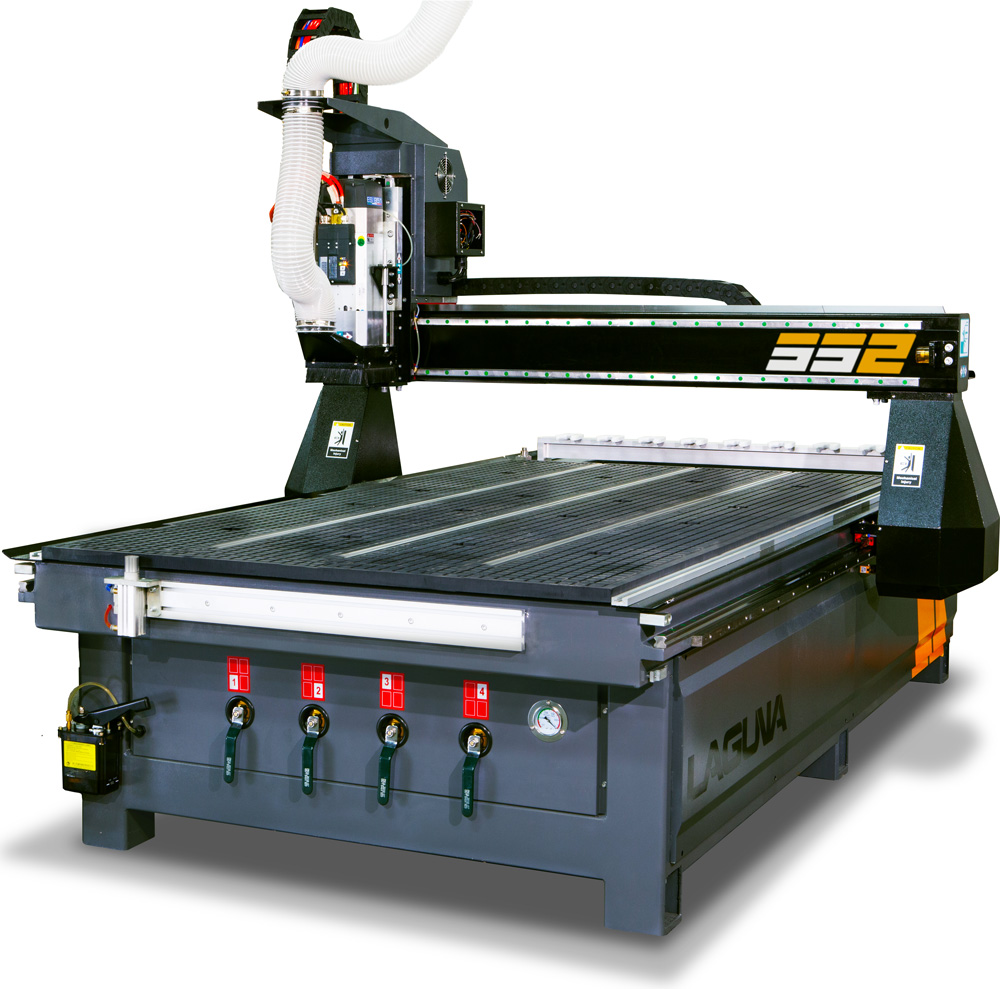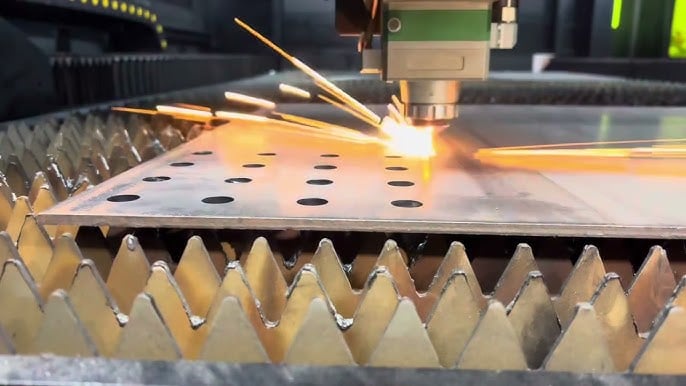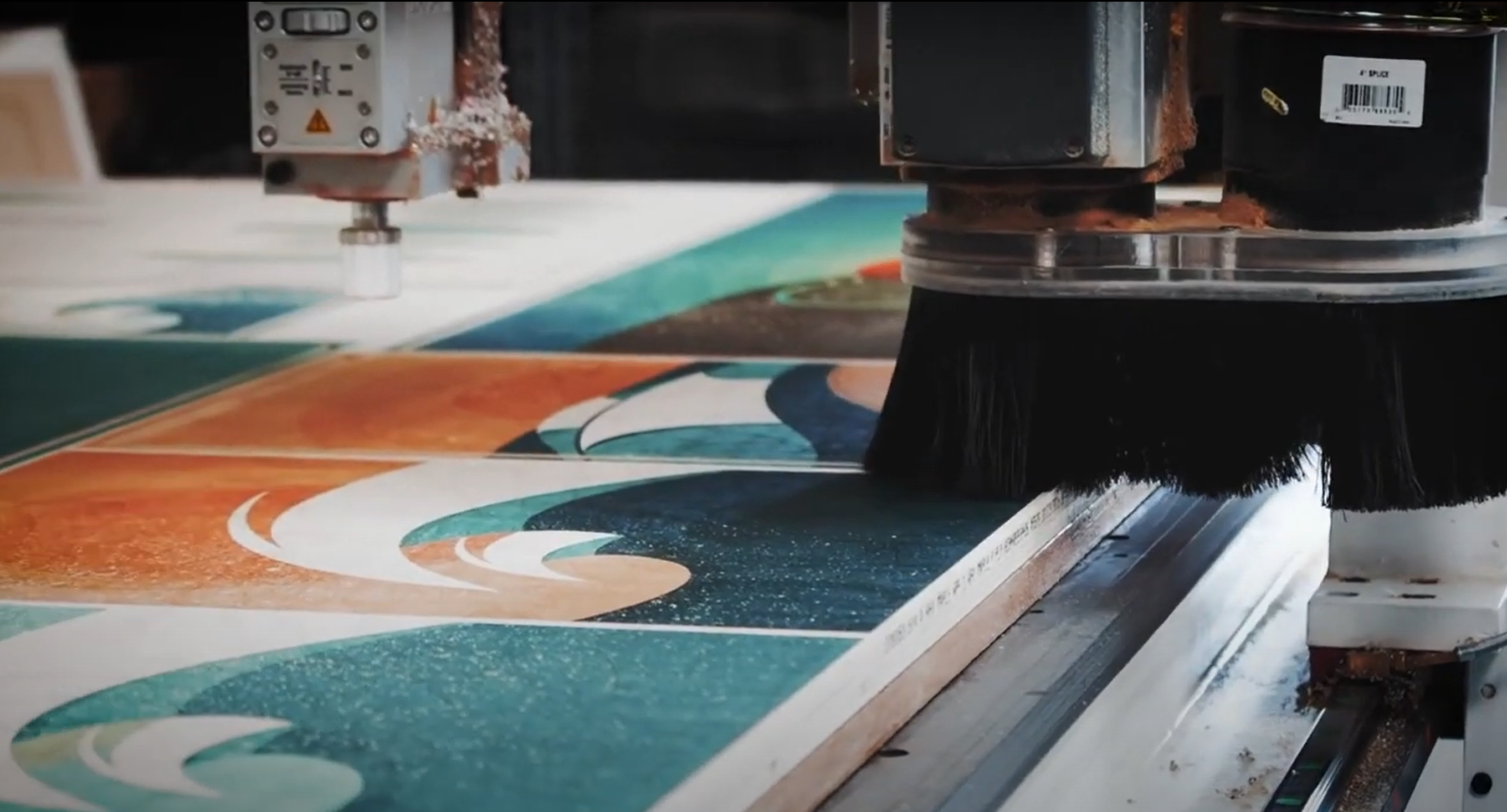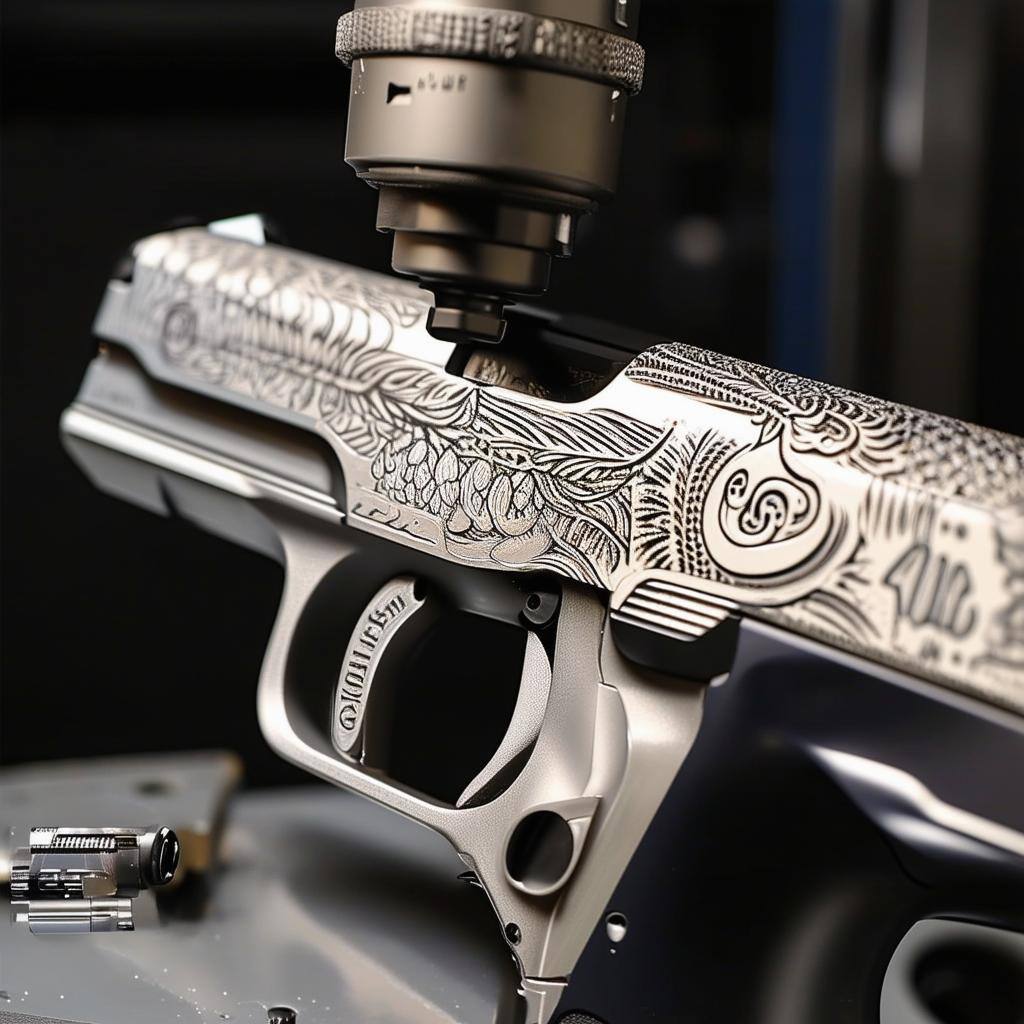What's the real difference? Why do companies choose to use one over the other? Or, in LAGUNA's case, why do we use both? There are tons of articles talking about the differences between the two.
However, most have a biased opinion on the actual differences. Some even go so far as to exaggerate or misconstrue information to dissuade potential buyers from their competitors. Why trust a source that doesn't provide accurate and unbiased information so you can make your own mind up?
Basically, LAGUNA CNCs uses both ball screws and rack-and-pinion. Generally, each CNC router uses a helical rack-and-pinion method on our X and Y Axes and a ball screw on the Z Axis to control the router head.
Only on our IQ Series do we use a ball screw on all axes; which, we'll cover why, later. With third party and scholarly articles, we'll cover how we utilize the advantages of both systems in our CNC Routers and how we compensate for each systems' shortcomings.

Ball Screws
Let's start with ball screws and why we use it on any axis that is shorter than 4'. Ball screws are traditionally only supported at each end, no matter the travel length. The longer the length the ball screw has to travel, the more susceptible it is to whipping action.
Because of this whipping action, their travel speed is dramatically reduced and their accuracy deteriorates greatly on axes longer than 4'.To counter this, LAGUNA has limited any ball screw axis travel to under 4'. This restriction eliminates any whipping action and maintains ball screw's highly praised accuracy.
Though there are compensation methods for longer ball screw controls, the cost to implement them greatly outweighs the benefit. For this reason, LAGUNA has chosen the ball screw for axes under 4'
Rack-and-Pinion
In LAGUNA's larger CNC routers, the rack-and-pinion method is used to handle the X and Y axes. Because both axes are at least 4' on our larger CNC routers, the rack-and-pinion system was the ideal choice. We'll review why we chose the rack-and-pinion and how we compensated for any of the rack-and-pinion shortcomings.
HiWin Precision Guide Rails

How does LAGUNA install precision-ground helical rack-and-pinion on our CNCs? Each rail comes is bolted every 4" with HiWin precision guide rails to negate any wobble as much as possible. Both rails are bolted to an all-steel, one piece welded frame that's heat treated.
This heat treatment eliminates any weak points along the frame, giving each CNC router the best stability available. Having the guidance systems bolted every 4" to an all-steel, one-piece frame ensures zero vibration.
Accuracy and Backlash
One of the biggest issues with traditional rack-and-pinion systems is the gap inherit between the pinion and rack.
This inaccuracy is made worse on an one-motor set up. These two problems cause significant backlash, which ruins accuracy. To compensate for this shortcoming, LAGUNA has utilized three simple solutions to ensure the highest amount of accuracy as possible.
For the first solution, we use a precision-ground helical rack system that allows the pinion and rack to be in constant mesh. This eliminates any gap that could allow the gears to slip and cause backlash. Using a helical system is also extremely quiet when compared to other methods.
The second, we install two motors and two rails: one rail on each side of the frame and one direct-drive motor at the bottom of the each side of the gantry. The HiWin precision guide rails take the pressure off of the racks and pinions meshing. The second motor is pre-loaded to fix any
The third, and for our higher-end CNC routers, we employ either B&R or FANUC controls and servo motors. These high-end control systems handle any amount of backlash or inconsistencies still left over from the previous two methods.
Wear and Tear of Rack-and-Pinion

Just like your car needs oil and regular oil changes, rack-and-pinions also need proper lubrication and reapplication. To ensure the gears aren't grinding against metal, LAGUNA installs a centralized lubrication system on our CNC routers*. This helps to keep your rack-and-pinion system properly lubricated at all times, greatly reducing wear.
To also dramatically minimize wear on the rack, the majority of the pressure and weight from the gantry is relieved by HiWin linear guide rails, rather than the pinions resting directly on the rack. If a CNC manufacturer claims a rack-and-pinion system gets so much wear it needs to be replaced, now you know what the actual truth is.




